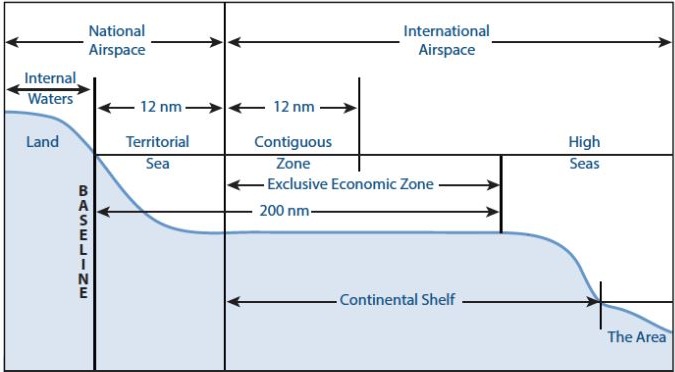Year End Review: Ministry of Earth Sciences | 24 Apr 2020
Important Facts
Various Cyclone Storms
- According to IMD’s Statement on Climate of India, 2019 was exceptional for the number of cyclones that hit India’s east and west coasts. Following are the major cyclones that hit Indian coasts:
- Previously, similar cyclonic activity was reported in the Indian Ocean only during 1893, 1926, 1930, and 1976. During these years, cyclones formed both in the Arabian Sea and the Bay of Bengal put together numbered to ten in a calendar year.
Tropical Cyclone
- Cyclone is the formation of a very low-pressure system with very high-speed winds revolving around it. Factors like wind speed, wind direction, temperature and humidity contribute to the development of cyclones.
- Before cloud formation, water takes up heat from the atmosphere to change into vapour. When water vapour changes back to liquid form as raindrops, this heat is released to the atmosphere.
- The heat released to the atmosphere warms the air around. The air tends to rise and causes a drop in pressure. More air rushes to the centre of the storm. This cycle is repeated.
- Since Hurricanes derive their energy from heated seawater which can be prevented by presence of upper-level-winds that disrupt the storm circulation forcing it to lose its strength.
- Notably, an active Arabian Sea saw more cyclonic storms than the Bay of Bengal during 2019. It was only for the second time in 117 years that the Arabian Sea saw such intense and frequent cyclones.
- In 2019, eight cyclonic storms formed over the north Indian Ocean, of these, five — Cyclones Vayu, Hikka, Kyarr, Maha and Pavan originated in the Arabia Sea, which is normally calmer. On the contrary, the Bay of Bengal reported less than normal number of cyclones. The three cyclones formed here were — Cyclones Pabuk, Fani, Bulbul.
- The Bay of Bengal sees an average of five cyclones each year, making 2019 a year when the Arabian Sea dominated.
- Government launched the GAGAN Enabled Mariner’s Instrument for Navigation and Information (GEMINI) device in October 2019.
- The device will help in seamless and effective dissemination of emergency information and communication on disaster warnings, Potential Fishing Zones (PFZ) and Ocean States Forecasts (OSF) to fishermen.
- The Indian National Centre for Ocean Information Services (INCOIS), an autonomous body under the Ministry of Earth Sciences (MoES), joined hands with Airports Authority of India (AAI) to utilize the GAGAN (GPS Aided Geo Augmented Navigation) satellite system to transmit the PFZ, OSF and disaster warnings to fishermen with GAGAN system consisting of three geosynchronous satellites (GSAT-8, GSAT-10 and GSAT-15).
- GAGAN foot-print covers the entire Indian Ocean round the clock.
- GAGAN (GPS Aided Geo Augmented Navigation) was developed by the Indian Space Research Organization (ISRO) and the Airports Authority of India.
- It is India's first satellite-based global positioning system that relies on ISRO’s GSAT satellites.
International Symposium on Advances in Agro Meteorology
- 3-day International Symposium on “Advances in Agro Meteorology for Managing Climatic Risks of Farmers” (INAGMET-2019) was organised by Association of Agro Meteorologists.
- Agricultural Meteorology is the branch of meteorology that deals with the relationship of weather and climate to crop and livestock production and soil management.
- Depending on the level of development, roughly 20 to 80% of the inter-annual variability in agricultural yields stems from the variability of weather through either direct physiological stresses or through indirect stresses, like pests and diseases.
- Agricultural production systems are controlled by the environmental conditions and farm management.
- The resilience of the agricultural systems can be achieved through climate sensitive policies and actions.
- Identification, understanding and analysis of the climatic risks in agriculture and finding their possible solutions are the key issues to be addressed by stakeholders.
National Institute of Ocean Technology (NIOT)
- Silver jubilee celebrations of NIOT took place in Chennai.
- NIOT was established in November 1993 as an autonomous society under the Ministry of Earth Sciences by the then Department of Ocean Development.
- Major aim of starting NIOT under the Ministry of Earth Sciences, is to develop reliable indigenous technologies to solve the various engineering problems associated with harvesting of non-living and living resources in the Indian Exclusive Economic Zone (EEZ), which is about two-thirds of the land area of India.
Maritime Zones
- United Nations Convention on the Law of the Sea (UNCLOS) 1982, also known as Law of the Sea divides marine areas into five main zones namely- Internal Waters, Territorial Sea, Contiguous Zone, Exclusive Economic Zone (EEZ) and the High Seas.

